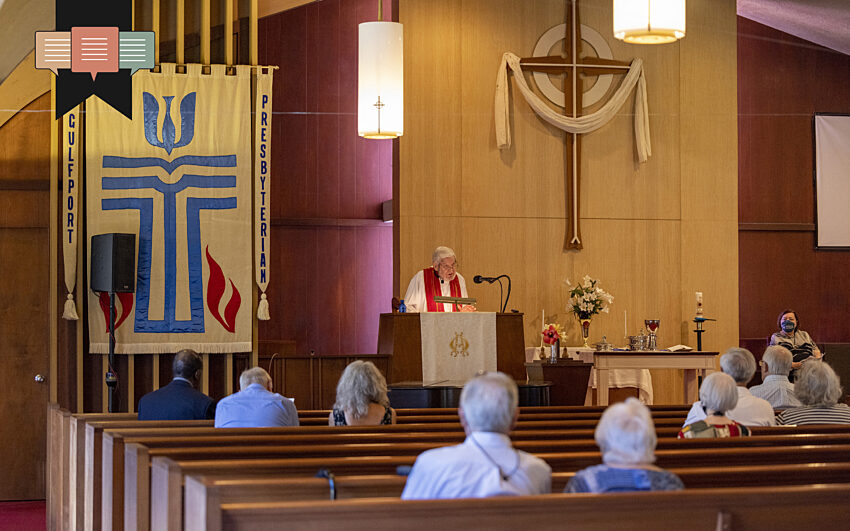The PCUSA is literally dying

I grew up in the mainline church, and it won’t be until I’m nearly 80 years old that I will have spent more of my life outside the mainline church than inside it. I was born, baptized, confirmed, and ordained in the Reformed Church in America, a smallish (originally) Dutch denomination that, with its roots dating back to 1628 in New Amsterdam, boasts of being the oldest Protestant denomination with a continuing ministry in the United States. I am thankful for the many good people, good churches, and good pastors in the RCA. I met Jesus in the RCA, so there will always be reasons for gratitude.
But somewhere in my college years (at an RCA school), I realized that the denomination I grew up in was considered a part of the mainline tradition. So named for the affluent suburbs along Philadelphia’s main railroad line, the term “mainline Protestant” came to be synonymous with the old denominations that broke toward modernism (instead of fundamentalism) and often wore the label ecumenical (even if some of them still claimed to be evangelical).
If you aren’t a baby boomer or a student of religious history, it can be hard to fathom the cultural influence and social cohesion that once resided in mainline Protestantism. At its height in 1965, mainline Protestant churches counted 31 million members out of a U.S. population of less than 200 million. Most Protestants were in the mainline denominations, and the country’s cultural norms were set, for better or for worse, by the old school Protestant establishment.
Almost 60 years later, all of that has changed. In its recently released demographic report, the Presbyterian Church (USA) announced it lost another 51,584 members. From a membership peak of 4.25 million in 1965, the PCUSA rolls are now down to 1.19 million. And that membership decline hardly conveys the severity of the situation. In the last reporting year, the denomination dissolved 104 congregations and dropped four presbyteries. More than 40 percent of the congregations have fewer than 50 members. Almost a third of the denomination is more than 70 years old, and another 26 percent are older than 55. Keep in mind that only 16 percent of Americans are 65 or older. The PCUSA is literally dying.
Relevant Christianity doesn’t stay relevant for long.
While my denomination, the conservative Presbyterian Church in America, has hardly been growing by leaps and bounds over the past few years, it is a model of health compared to its mainline counterpart. Even though the historic PCUSA has almost 9,000 churches and more than a million members, and the denomination-come-lately PCA (founded in 1973) has only 1,600 churches and not quite 400,000 members, the PCA has almost half the income of the PCUSA, nearly as many ministerial candidates, and in 2020 had more infant baptisms (which probably starts with having more infants). Congregations in conservative denominations (like the PCA) are, on the whole, bigger, younger, and multiplying in ways the mainline is not.
Of course, we must not think that conservative churches and denominations always grow (or at least hold their ground) and liberal churches and denominations always shrink. Evangelical churches face plenty of their own challenges. But two factors make the decline of the mainline noteworthy as a cautionary tale.
First, the mainline church, despite its emphasis on diversity, equity, and inclusion, has been spectacularly unsuccessful in appealing to minorities. The PCUSA has tried to do all the right “progressive” things on race for decades (like including the category “Latinx” in its report), and yet, the denomination is more than 88 percent white, only 1.61 percent Hispanic, and only 4.39 percent black (and that includes Africans). The gospel of diversity does not bring various peoples together nearly as well as the gospel of the cross.
Second, theological liberalism is, by definition, supposed to be attuned to the times in which we live. As Gary Dorrien puts it in The Making of American Liberal Theology, “Since the eighteenth century, liberal Christian thinkers have argued that religion should be modern and progressive and that the meaning of Christianity should be interpreted from the standpoint of modern knowledge and experience.” In other words, if any ecclesiastical tradition should be relevant for people today, one would think it should be the mainline. Here, for example, are the headlines that The Presbyterian Outlook had (at the time of this writing) listed on its Current Affairs page before its article about the PCUSA statistical report: “The climate crisis is increasingly a refugee crisis,” “Finding diversity and equity in investing decisions,” and “We’ve got to move Earth Day to 12 months a year.” That’s one way to “reinterpret” Christianity for modern people. It’s just not a Christianity that’s going to compel new people to give up their Sunday mornings.
And that’s the rub. Relevant Christianity doesn’t stay relevant for long. Reinterpreted Christianity may appeal to the deconstructing, but it does not win the hearts and minds of the lost. We have no guarantee that faithful churches will thrive. But after almost 60 years of constant mainline decline, we have a pretty good idea of how churches die.


